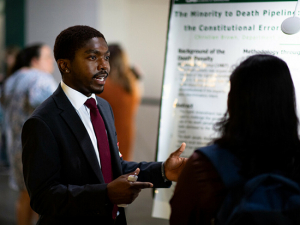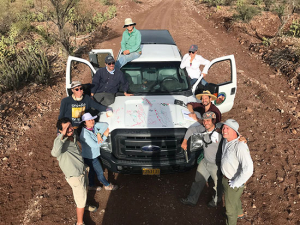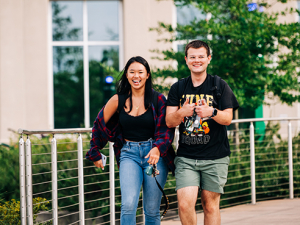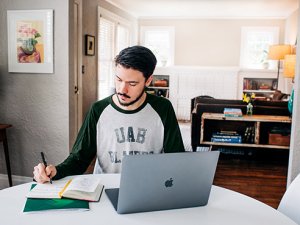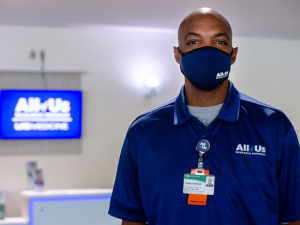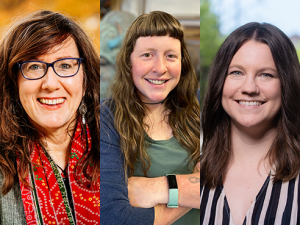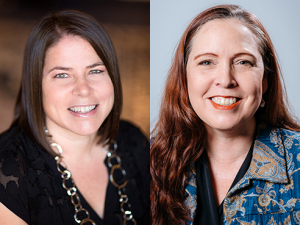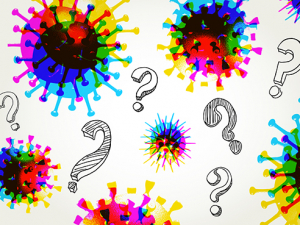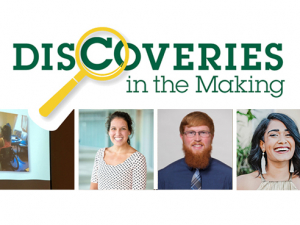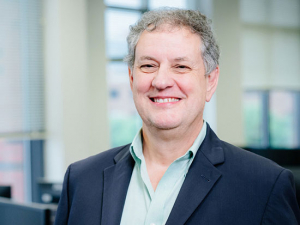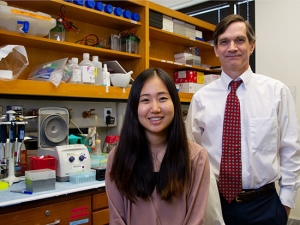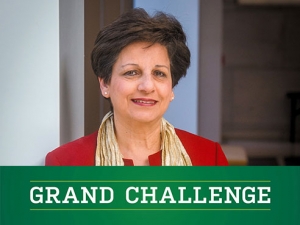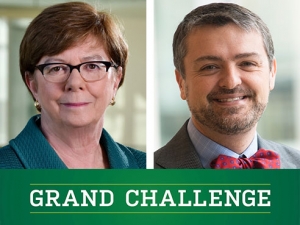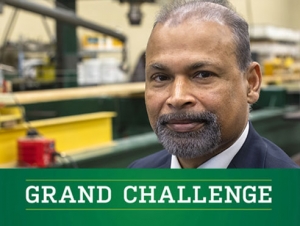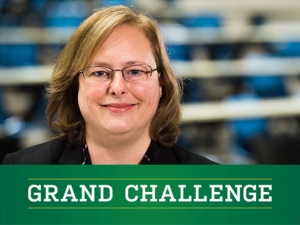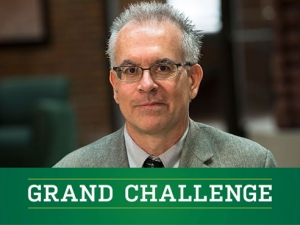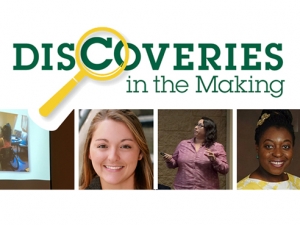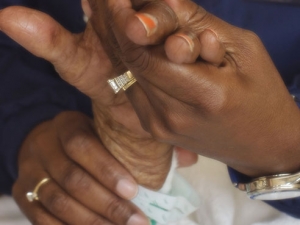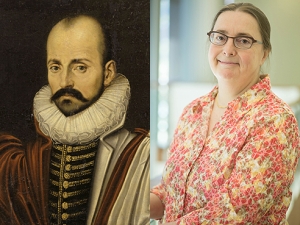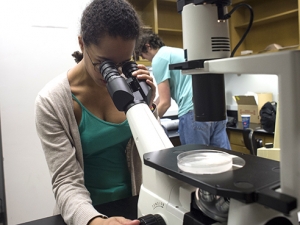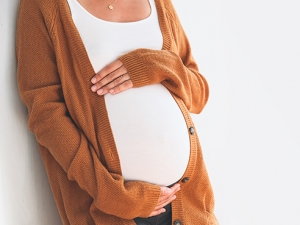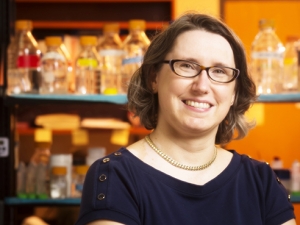Everyone at UAB probably keeps a running list of people they are concerned about during the COVID-19 pandemic: elderly relatives, children, students, colleagues, friends. But few have as many people on their minds as the UAB researchers in charge of some of the country's largest cohort studies. These research projects can enroll tens of thousands of participants and follow them anywhere from a few years to the rest of their lives.
Five faculty members who are principal investigators of major cohort studies recently took part in a virtual roundtable discussion hosted by the School of Public Health titled The Pandemic's Impact on the Conduct of Cohort Studies and Trials (watch the full presentation at the link or below). Here are some highlights of their discussion.
Big truck meets roadblock
As the pandemic arrived in early 2020, Suzanne Judd, Ph.D., professor in the Department of Biostatistics, was preparing to take a big rig to Dallas County, Alabama, to begin recruiting participants in the RURAL (Risk Underlying Rural Areas Longitudinal) Cohort Study. Pulling a custom-designed trailer packed with equipment including a CT scanner, EKG machine and more, RURAL’s truck would set up shop in Dallas and nine other economically disadvantaged counties in Alabama, Kentucky, Louisiana and Mississippi. The goal: Recruit 4,600 multi-ethnic participants to find out why people in rural communities in the South have such a relatively high burden of heart, lung, blood and sleep disorders compared to people in non-rural areas.
"We had been doing lots of boots-on-the-ground work" since the study launched in 2019, explained Judd, who is co-principal investigator for RURAL at UAB along with Assistant Professor Shauntice Allen, Ph.D. "It doesn't make sense to the public when you say, 'Hey, I want you to come to my clinic and then I want to follow you for the next 40 years of your life.’ That is a very scary thought for people. So we wanted to be in the community talking to people, letting them know who we are, giving them information through seminars, community tabling events and lunch-and-learns so that it wasn't foreign when we came in with this big truck."
COVID ended that in-person work. "All those community activities had to stop," Judd said. "We tried to do as much virtually as we could," she noted, but "we lost some ground." Recruiting began in June 2021 and includes new protective steps. "We're doing spirometry [as part of the participant intake visits], which involves participants blowing out all of their air as hard as they can," Judd said. "So we've got to take special precautions and everyone will have to do a COVID test in order to participate in the visit."
Relaunching a cohort during COVID
Like Judd with her RURAL study, Mirjam-Colette Kempf, Ph.D., professor in the schools of Nursing, Public Health and Medicine, was supposed to start enrolling participants in spring 2020. In Kempf’s case, it was as principal investigator (with Jodie Dionne-Odom, M.D., associate professor of Medicine and Infectious Diseases at UAB and Deborah Konkle-Parker, Ph.D., at the University of Mississippi Medical Center) for the MACS/WIHS Combined Cohort Study (MWCCS), formed by the merging of two long-running HIV studies in 2019. (The Multicenter AIDS Cohort Study, or MACS, began in 1984 and had enrolled more than 7,300 men living with HIV or at high risk for HIV infection. The Women’s Interagency HIV Study, or WIHS, began in 1993 and enrolled nearly 5,000 women living with HIV or at high risk for HIV infection.) “In 2019, the two studies were combined and the protocols were harmonized,” Kempf said. All of this preliminary work was complete by early spring 2020. “In April we were scheduled to start re-recruiting participants into the combined cohort study,” Kempf said. Nationwide, the MWCCS study aims to have about 5,000 participants across all sites. In addition to re-recruiting its WIHS participants, UAB will recruit male participants for the first time as well. “With the renewal, NIH wanted the Southern sites to recruit men into the cohort,” Kempf said. “That reflects the fact that the South is the epicenter of the [HIV/AIDS] epidemic in the United States.”
The newly refunded and relaunched study had a change in primary funding agency from the National Institute on Allergy and Infectious Diseases to the National Heart, Lung and Blood Institute, “with an accompanying focus on the comorbid conditions associated with the aging population of people living with HIV,” Kempf said. “Our participants come in once a year for an extensive battery of clinical and behavioral assessments, including brain MRIs, echocardiograms and pulmonary function tests that let us determine pre-clinical conditions you would not be able to see in a clinic cohort.”
COVID interrupted these recruitment plans, of course. “Our enrollment was delayed by another six months to Oct. 1,” Kempf said. “Over the summer what we did instead was implement four waves of COVID surveys, calling the participants to get feedback on symptoms, testing and hospitalizations, as well as psychosocial assessments and to gauge social disruptions they may have experienced, including financial distress, loss of child care or jobs and substance use.” The UAB investigators also received an NIH supplement for a more in-depth analysis of the impact of mental health care disruptions during the pandemic on participants.”
Enrollment slowly rolled out in October, but it did not fully begin until spring 2021, Kempf said. Even then, “some of the assessments had to be delayed for some sites because they did not have the proper room ventilation and equipment for pulmonary function tests to be safe,” she said. “We are even thinking of changing our dental exams to make them easier on staff — taking pictures of teeth rather than doing traditional oral exams.”
Emergency strategies and new studies
In March 2020, Alan Tita, M.D., Ph.D., John C. Hauth, MD Endowed Professor in the Department of Obstetrics and Gynecology, was closing in on a recruitment milestone. Tita is principal investigator for the CHAP (Chronic Hypertension and Pregnancy) project, a randomized trial of antihypertensive therapy versus standard care in pregnant women with mild chronic hypertension. CHAP's goal was to recruit 2,400 women for the trial. "We were looking to get done with accrual and thinking we might hit our goal in September or October [2020]," Tita said. "But then COVID-19 hit."
As the scale of the pandemic became clear, Tita and team asked CHAP's 60-plus sites nationwide to develop tailored remediation strategies. "CHAP did not require any additional study-dedicated visits over usual prenatal and postpartum clinical visits, but as sites got shut down and reverted to telehealth, we had to immediately look for alternative ways to interface with our participants," Tita said. That included finding ways to collect regular blood-pressure measurements and deliver medications to participants.
"We set up virtual study visits," Tita said. "We came up with a new plan to ship medication to participants. Some sites bought home blood-pressure devices for all their patients. We also set up remote consenting via email and phone. We had to immediately do IRB modifications [changes to the study protocol, which have to be approved by the study's Institutional Review Board]. And the UAB and other site IRBs approved really, really quickly."
Many CHAP sites allowed patients an expanded interval between visits, Tita said. "Some even set up drive-through specimen collection hubs as part of clinical care, and they used those as well for CHAP specimen collection."
CHAP also added new data-collection procedures to document positive COVID-19 tests and disease severity among participants. And "we have proposed a number of ancillary studies related to COVID-19," Tita said.
Some of the strategies that CHAP sites put in place in response to COVID-19 may be adapted long-term, including “more frequent use of remote/virtual consenting, allowing for telehealth visits and offering more flexibility in the delivery of study medications to participants," Tita said. "The landscape of medical care is going to change in response to COVID-19 — you know there may be more telehealth, for instance, so we should have in place a research framework to match these changes."
Rapid pivots from investigators — and the institution
From additional study questions to long-discussed convenience issues, such as allowing patients to fill out forms at home instead of during clinic visits, COVID-19 has changed their studies, often for the better, Tita and other participants said. "I would never want a pandemic to hit us again," said Michael Saag, M.D., professor in the Division of Infectious Diseases. But the changes brought by pandemic necessities have helped advance many improvements, he noted.
Saag is principal investigator for CNICS (the Centers for AIDS Research Network of Integrated Clinical Systems), a national network of clinical data from electronic medical records at UAB and seven other Centers for AIDS Research. More than 37,000 patients living with HIV/AIDS are participating in CNICS.
"One thing we collect are patient-reported outcomes, or PROs," Saag said. Patients answer questions about "not only symptoms but substance use, alcohol use, depression, smoking, etc." With in-person visits curtailed dramatically due to the pandemic, "we went to telemedicine visits," he said. But CNICS quickly pivoted and “we were able to collect data in a systematic way," Saag said. "We also were able to create from scratch the technology for patients to do their PROs from home” via a mobile app. Now, “a lot of patients are electing to do that as they arrive or before they arrive in clinic for their visits," Saag said.
This electronic data collection also allowed CNICS to "very quickly pivot to study COVID-related disease among our patient population," Saag said. In October 2020, the investigators received a funding supplement for this work "and within two months we had a study that was organized and completed, and the data were presented last month [March 2021] at CROI [Conference on Retroviruses and Opportunistic Infections], which is our big meeting," Saag said. "Now we are back in clinics throughout the country, but we still are using telemedicine where we hadn't before, and these mobile PRO apps are working quite well. And we are ready to enter into a vaccine effectiveness study — all of our patients who get vaccinated we will follow longitudinally."
Kempf and the MWCCS investigators have begun immunology and vaccine-related studies in their cohort as well. “When you think about COVID, there is this huge question of how long immunity will last,” Kempf said. “With the immunocompromised, you add the question of how strong their immunity will be, even when they are vaccinated. The type of immune response, the longevity of it, the issue of booster vaccines and which vaccines may be better suited to help with that — all of these questions need to be answered.”
Like Tita and other presenters, Saag credits his study's successful navigation of COVID-19 in part to "our institutional response" at UAB. "Someone mentioned earlier about how the IRB quickly turned around a request, but it was more than that," Saag said. "It was getting funding applications in quickly, it was getting mobilized with all kinds of [resources]. There was another project I was involved in where a contract was set up in, I think less than two days. That's unheard of. I think it shows that when there's leadership that says, 'We've got to get this done' and everyone lines up behind that, that a lot of almost magical things can happen."
Lessons in resilience
"We've learned a lot about resilience," said Bruce Korf, M.D., Ph.D., principal investigator of the Southern Network of the All of Us Research Program from the National Institutes of Health. At UAB, Korf is Wayne H. and Sara Crews Finley Endowed Chair in Medical Genetics in the School of Medicine, associate dean for Genomic Medicine and Chief Genomics Officer for UAB Medicine.
The All of Us Research Program aims to recruit up to one million participants nationwide in five years to expand the benefits of cutting-edge research to all Americans, especially those underrepresented in previous studies. The Southern Network’s recruitment goal is 93,000. To meet this goal and retain participants in the study, UAB had hired dozens of study navigators. The Southern Network had been one of the leading sites nationally in recruiting and had reached 25,000 participants enrolled by March 2020, Korf says. But like every participating institution in All of Us, the Southern Network stopped in-person recruiting that month in response to COVID-19. Although there was no way to know this at the time, in-person recruiting at UAB would not begin again until early 2021.
"We had a small army of study navigators who had been doing face-to-face enrollment," Korf said. "So we shifted to retention." Retention in All of Us includes completing regular health surveys, including a new survey, COPE (COVID-19 Patient Experience), in response to the pandemic. "Our team ended up spending a good chunk of their time on the phone," Korf said. "They made tens of thousands of calls to encourage people to complete surveys and be retained in the program."
During the pandemic, the NIH also changed its policy to allow navigators to do computer-assisted telephone interviews to retain participants, Korf added. "A lot of the participants are not tech-savvy or even have internet access. Now the Southern Network is the biggest user of computer-assisted telephone interviews, which has been a tremendous boost in terms of our ability to retain participants."
‘Staff engagement was very important’
This change in roles, and the re-introduction of in-person enrollment, meant that "staff engagement was very important," Korf said. "We've done a lot of community engagement throughout this study; this pivot due to COVID-19 meant we had to work to get staff on board and comfortable with their roles and with new safety precautions. We learned a lot about how to make sure that staff were both safe and comfortable."
Judd, who in addition to RURAL is principal investigator for the long-running REGARDS (Reasons for Geographic and Racial Differences in Stroke) cohort study, had a similar experience. "REGARDS is currently following 12,000 people" of an initial cohort of 30,239 participants enrolled between 2003 and 2007, Judd said. "That means we have about 40 people who work for us, because it takes a lot of employees to follow that many people."
Following up with REGARDS participants normally means phone calls and preparation of newsletters and other mailed pieces for the participants, many of whom are older than 65. "We had to learn how to pivot and have people [working] at home," Judd said. "Then we had to find ways to get them back" to do jobs that could not be accomplished remotely. One benefit of having many people at home, especially early in the pandemic, Judd said: "Our phone participation was at an all-time high," she said.
The REGARDS investigators, in partnership with the Collaborative Cohort of Cohorts for COVID-19 Research (known as C4R), added new data-collection points as well. "We are now asking people if they have had positive COVID tests, have gone to the hospital or have had any other outcomes from COVID," Judd said. And they are now sending blood tests to 8,000 REGARDS participants "to see if they have COVID antibodies and get a feel for antibody prevalence in this cohort," she added.
Questions for the future
Kempf, who served as moderator, concluded the discussion by asking participants about urgent COVID-related research questions that need to be answered.
“It’s almost a laundry list,” Saag said. “But starting at the top for me would be the evaluation of what in the world is happening with long COVID…. Understanding the biology of that I think is essential.” Another important topic is vaccine efficacy “and the issue of variants and how they respond to vaccines,” Saag added. “The other one I think is critical is evaluating people who have underlying disease that requires immunosuppression, and in particular anyone who is on an anti-CD-20 drug like Rituxan.”
“The mental health piece will be huge,” Judd added. The NIH has begun studies allowing “cohorts to start collecting data to understand how [mental health] affects participants’ health so we can pool data across multiple cohorts,” she said. “I think that’s going to be one of the best tools we have.”
“We have seen the massive impact that social isolation has had on our participants” in the MWCCS study, Kempf said. “Interestingly, men in our study seemed to suffer more from loneliness and social isolation, while women had better social support systems but saw more financial impact and strain from the pandemic. The advantage we have with MWCCS is we have data going back years for these same women, so we can make some comparisons to pre-COVID time points.”
Judd, whose primary area of research as an epidemiologist is in nutrition, has another burning question. “When we do nutrition research in children there is this phenomenon called the ‘healthy child effect,’” Judd said. “That’s the fact that healthy children play with other children, so they are more likely to get upper respiratory infections. We just spend a year with very few upper respiratory infections, and I don’t know what that is going to mean next year. Grandparents weren’t around their children as much, and our participants may start encountering common viruses and bacteria that they took a year off from during the pandemic. I’m really interested in what happens with the common cold or stomach bugs going forward.”
“I would add the notion of host genetic factors that help to determine why different people respond differently to exposure to the virus and why some people get extremely ill [while] UAB has become involved with the international COVID-19 Host Genetics Initiative, which has identified a number of factors that help predict severity of illness. “We also pivoted our enrollment in the Alabama Genomic Health Initiative [a partnership between UAB and the Huntsville-based HudsonAlpha Institute of Biotechnology] toward contributing to an NIH study called COVNET,” Korf said. “We contributed around 1,000 specimens of DNA from individuals who had been diagnosed with COVID towards a much larger dataset to do genome-wide association studies.”
Kempf added another aspect of differential responses to COVID: vaccine responses. More research would “give us the chance to better understand why some people react differently and understand some of the more severe reactions we’ve seen,” Kempf said. Vaccine hesitancy, she added, is a “huge issue that is going to hold us back from where we could be.”
On the topic of vaccine hesitancy, “an interesting lesson for us occurred recently,” Korf said. “The question came up — I think it was raised by the NIH — whether we were interested in providing materials about All of Us at vaccination sites, figuring here is a great opportunity to reach out not to enroll [people] but to alert them to the opportunity to enroll in All of Us. We put that to our community advisory board and they gave us some feedback which wasn’t intuitive to me but I think was important, which is that for many of them, the decision to be vaccinated was a really complicated, personal decision. They cautioned us to be mindful of this when presenting outreach materials about All of Us at vaccination sites.”
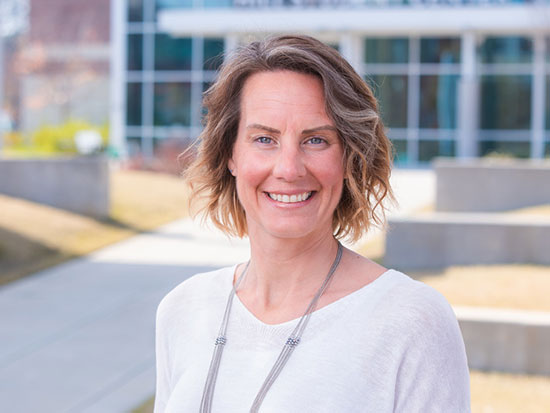 “We wanted to be in the community talking to people, letting them know who we are, giving them information through seminars, community tabling events and lunch-and-learns so that it wasn't foreign when we came in with this big truck." — Suzanne Judd, Ph.D., professor in the Department of Biostatistics, explains laying the groundwork for her RURAL study
“We wanted to be in the community talking to people, letting them know who we are, giving them information through seminars, community tabling events and lunch-and-learns so that it wasn't foreign when we came in with this big truck." — Suzanne Judd, Ph.D., professor in the Department of Biostatistics, explains laying the groundwork for her RURAL study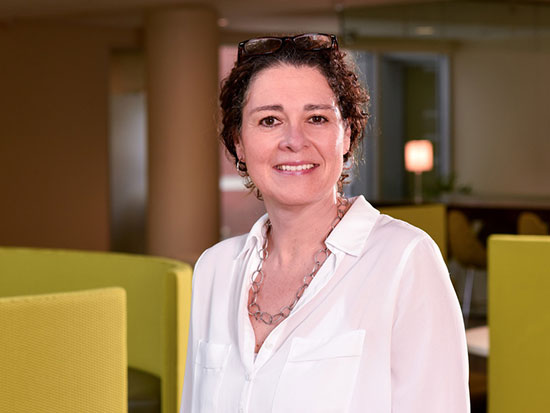 “Our enrollment was delayed by another six months to Oct. 1. Over the summer what we did instead was implement four waves of COVID surveys, calling the participants to get feedback on symptoms, testing and hospitalizations, as well as psychosocial assessments and to gauge social disruptions they may have experienced, including financial distress, loss of child care or jobs and substance use.” — Mirjam-Colette Kempf, Ph.D., professor in the schools of Nursing, Public Health and Medicine, discusses the new MACS/WIHS Combined Cohort Study
“Our enrollment was delayed by another six months to Oct. 1. Over the summer what we did instead was implement four waves of COVID surveys, calling the participants to get feedback on symptoms, testing and hospitalizations, as well as psychosocial assessments and to gauge social disruptions they may have experienced, including financial distress, loss of child care or jobs and substance use.” — Mirjam-Colette Kempf, Ph.D., professor in the schools of Nursing, Public Health and Medicine, discusses the new MACS/WIHS Combined Cohort Study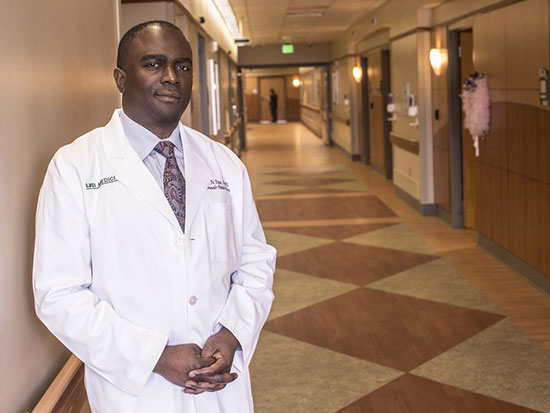 "We set up virtual study visits. We came up with a new plan to ship medication to participants. Some sites bought home blood pressure devices for all their patients. We also set up remote consenting via email and phone. We had to immediately do IRB modifications. And the UAB and other site IRBs approved really, really quickly."— Alan Tita, M.D., Ph.D., professor in the Department of Obstetrics and Gynecology and principal investigator for the CHAP study
"We set up virtual study visits. We came up with a new plan to ship medication to participants. Some sites bought home blood pressure devices for all their patients. We also set up remote consenting via email and phone. We had to immediately do IRB modifications. And the UAB and other site IRBs approved really, really quickly."— Alan Tita, M.D., Ph.D., professor in the Department of Obstetrics and Gynecology and principal investigator for the CHAP study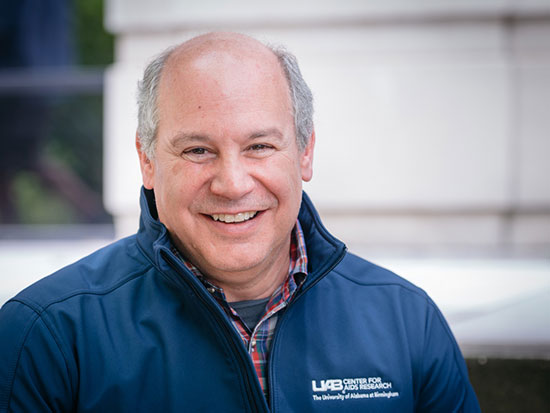 "There was another project I was involved in where a contract was set up in, I think less than two days. That's unheard of. I think it shows that when there's leadership that says, 'We've got to get this done' and everyone lines up behind that, that a lot of almost magical things can happen." — Michael Saag, M.D., professor in the Division of Infectious Diseases and principal investigator for the CNICS study
"There was another project I was involved in where a contract was set up in, I think less than two days. That's unheard of. I think it shows that when there's leadership that says, 'We've got to get this done' and everyone lines up behind that, that a lot of almost magical things can happen." — Michael Saag, M.D., professor in the Division of Infectious Diseases and principal investigator for the CNICS study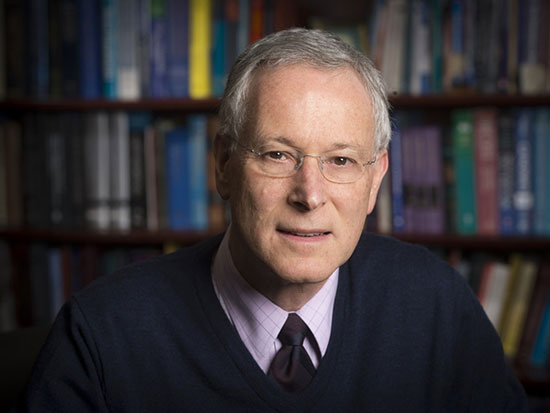 "Staff engagement was very important. We've done a lot of community engagement throughout this study; this pivot due to COVID-19 meant we had to work to get staff on board and comfortable with their roles and with new safety precautions. We learned a lot about how to make sure that staff were both safe and comfortable." — Bruce Korf, M.D., Ph.D., Chief Genomics Officer for UAB Medicine and principal investigator of the Southern Network of the All of Us Research Program from the National Institutes of Health
"Staff engagement was very important. We've done a lot of community engagement throughout this study; this pivot due to COVID-19 meant we had to work to get staff on board and comfortable with their roles and with new safety precautions. We learned a lot about how to make sure that staff were both safe and comfortable." — Bruce Korf, M.D., Ph.D., Chief Genomics Officer for UAB Medicine and principal investigator of the Southern Network of the All of Us Research Program from the National Institutes of Health